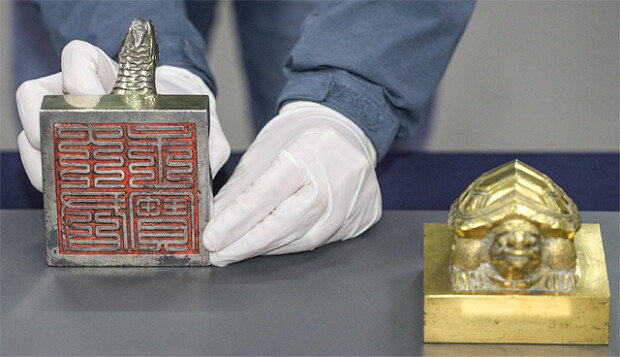Royal seals from King Gojong period return to S. Korea
Royal seals from King Gojong period return to S. Korea
Posted February. 20, 2020 08:17,
Updated February. 20, 2020 08:17

Daegunjubo, a royal seal representing King Gojong’s determination to establish the Joseon Dynasty as a modern independent sovereign country, and the Royal Seal of Hyojong created in the Yeongjo period have returned to South Korea after about 70 years. The Cultural Heritage Administration revealed the two royal seals on Wednesday.
Daegunjubo created in 1882 under King Gojong’s order holds historical value as it is the only one whose existence has been confirmed among the six seals created between 1876 and 1889 for diplomatic purposes. A seal granted by China was used in diplomatic documents in the Joseon dynasty, but several seals had been made and used during the Gojong period. “Bo” in Daegunjubo indicates that it is an emperor’s seal, rather than a subject country’s. It was cast in silver and plated using the mercury amalgam technique with a silver turtle as a handle.
The Royal Seal of Hyojong, or "eobo" in Korean, was produced when the posthumous title "myeonguijeongdeok," which means "bright righteousness and correct virtue," was bestowed upon King Hyojong in 1740. “Total of 412 seals were manufactured in Joseon, but 73 of them cannot be located at the moment after the Japanese colonial era, chaos during the liberated state of the country, and the Korean War,” said a member of the Cultural Heritage Administration.
Lee Dae-soo, Korean resident in the U.S., donated the two seals after purchasing them through an auction in the late 1990s. “My father was determined to return them to South Korea even from the very moment of purchasing,” said Lee’s son at the event revealing the seals. The seals will be showcased at the National Palace Museum of Korea in Jongno-gu, Seoul from Thursday through March 8.
Jong-Yeob JO jjj@donga.com







